
Wine Culture and Information since 2002 - Volume 22
 Wine Culture and Information since 2002 - Volume 22 |
|
Issue 126, February 2014 |
Contents |
|
|
Twelve Years of Events Dedicated to Wine |
|
This month I take the liberty of writing about a particular aspect of our activity associated to the spreading of wine culture. You will pardon me, dear readers, in case this editorial will seem a little vain or appear as an act of self celebration. These are things that, generally speaking, I do not like, therefore I do apologize in case my words will make you think so. One of the activities started with the foundation of DiWineTaste, is the organization of events dedicated to wine and wineries reviewed in our Guide. This activity about the spreading of wine culture, is also connected to the organization of classes and seminars that, in the course of the last twelve years, we have done together with our readers and for our readers. Of all of these activities, I would like to talk about events which are, in particular, the meetings we organize frequently and with a certain continuity. I have always believed the best way to understand a wine is to taste it, by evaluating it through our senses. This is obvious, many will say. This is obvious, it is what I say too. Words, fundamental elements on which it is based communication and what you are reading, no matter how rich and exhaustive they are, cannot precisely tell an emotion. Not only for the fact emotions are absolutely subjective, but also because senses can be understood through senses only. Also words, of course, can cause emotions and stimulate our senses, however emotions taking life from aromas and flavors, can be hardly and fully expressed by words. Moreover, everyone of us has a very personal relationship with wine, almost intimate, and therefore each one of us feels emotions and understand wine only by tasting it. By uncorking a bottle, pouring the noble liquid in a glass and to listen to its tale, its story. Our events have a long story, something which started twelve years ago. Indeed, before the foundation of DiWineTaste, I was already involved in the organization of enogastronomic events, then, from 2002 on - the year I founded this publication - it was pretty natural to associate this activity to the editorial one. Also the choice of the place has been, like to say, natural. My professional activity of that time, allowed me to meet the managers of Locanda dei Golosi - near Perugia - and this allowed us to start a strong collaboration as well as a genuine and dear friendship. With Locanda dei Golosi's friends there have been, since the beginning, a perfect idea about goals and the vision of how a wine event should be. Something which is still alive today and encourages us all to improve what we do, being aware of the fact there is always something to improve. I am proud of the fact, in twelve years of DiWineTaste activity, we have favored the meeting of our readers with many of the most significant representatives of wine enology, well known and less known wineries, always with the same passion and commitment. All for the spreading of wine culture as I strongly believe this is the best way to understand a wine and its producer, as well as the interpreter of a territory and of wine making vision. The organization of every event takes a lot of time and work, something in which we all are involved in. The beginning of the organization happens about one month before its date: our efforts are certainly rewarded both by the satisfaction and gratitude of participants, as well as by the ones of guest wineries. If we can talk about success, the merit equally goes to everyone working from the organization to the end, with no exception, all of us being equally indispensable in order to achieve a result. DiWineTaste events are mainly organized in Perugia, Italy: not only this is the city where our offices are located at, but also, geographically speaking, a central place of Italy, thus facilitating the participation of readers coming from outside Umbria. On this regard, the accommodation service offered by Locanda dei Golosi is fundamental: readers coming from outside Umbria have the opportunity to stay overnight, therefore avoiding to drive back home at the end of the event. Since many years we are also making a video interview with the protagonists of our events in order to give, also to the readers who could not participate, a chance to better know wines and guest winery. Our interviews, besides meeting our goal of spreading wine culture, are also made in order to allow consumers and producers to meet, by allowing them to tell their territory and wines. Let's then start 2014 with a renewed enthusiasm - few days ago took place the event dedicated to Castello Banfi - while wishing all of our readers and friends to keep on following what we do and to appreciate the wineries protagonists of our events. I would also like to thank all the wineries that, in the course of the last twelve years, believed in our project and took part to our events: without them, each one of them with no exception, we would not be here. Of course, I would also like to thank my friends Emiliano, Manuele and Roberto - brilliant managers of Locanda dei Golosi in Perugia - for the support and collaboration they grant us each month. Likewise, I would like to thank, and this is equally important, all the staff at Locanda dei Golosi: without their precious contribution and professionalism our events would not be the same. Last but not the least, my gratitude to all of our readers and everyone who took part to our events in the last twelve years. I wish them all to appreciate our future events, to discover and know new wines and producers. We will do our very best. As always, of course. Antonello Biancalana
|
||||
Roundness in TastingOnce loved and wished organoleptic sensation associated to quality, today roundness is usually considered a sign of the standardization of wine |
|
There have been a times during which wine quality was frequently measured by the use of barrique and the roundness perceived to the mouth. A period not so distant in time, a little less than twenty years, in those times between the relaunch of wine quality and the abuse of certain production techniques. Today roundness is seen as a quality typical of those times, an unmistakable sign of standardization that, at those times, represented both the norm and a wished sensorial characteristic. This standardization, today openly denied and rejected, was also associated to the use of two varieties in particular: Chardonnay for white wines, Merlot for reds. These two varieties, associated to the use of barrique, have been, undoubtedly, the main protagonists of the so called round wines, and their use became pretty “normal” also in wines produced with local grapes. Roundness, of course, is not Chardonnay, Merlot and barrique only. It is, first of all, a very important sensorial stimulus, indispensable - just like the other ones - to the determination of wine balance. Just like every other sensorial element participating to the definition of balance, roundness is not a negative factor - as it is frequently considered today - nor a positive quality. The intensity of its perception determines its agreeability, or better to say, it becomes appropriate in a wine in function of the intensity of the other gustatory elements. On this regard, it must be said both deficiency and excess - a principle true for every other gustatory element - contribute to the lack of balance. Moreover, it should be noticed, from a gustatory point of view, balance, as well as persistence, is an important factor for the determination of wine quality. What is roundness in a wine? The first consideration to make it is a tactile stimulus and not a gustative one. The perception of roundness can be simply defined as the round sensation which can be found in mouth during tasting. A sensation, like to say, viscous and thick, capable of giving wine a less fluid character while giving a certain “volume”. Once roundness in a wine was also called fattiness, a definition now almost disappeared from the vocabulary of taster. In particular, a wine was defined “fat” when during tasting was clearly perceived the presence of glycerol, one of the substances responsible of roundness. For the sake of clearness, these “round” sensations can be easily altered during production by adding specific substances, of them, the most famous one certainly is gum arabic, a food additive also known as E414 in Europe. It should be said gum arabic is used in wine production as a stabilizing substance, however it is undeniable its use contributes to increase roundness of wine. In particular, gum arabic is used at the moment of bottling in order to prevent possible faults in limpidity and in color of red and white wines. Moreover, it is used for preventing the formation and the sedimentation of tartrate. Despite its stabilizing properties, today gum arabic is widely used in wine making and - it should be said - its presence in wine is not perceptible during tasting. This means that, in the mouth, a wine to which was added gum arabic will be perceived round and smooth just like a wine having its own roundness qualities. Because of the use made of this substance, sometimes also in excessive and unjustifiable quantity, it is legitimate to think about its main usage as a “sensorial modifier” instead of a stabilizer.
Roundness is the result of many factors, substances and elements developing during wine production and aging. To them, like already said, are added all the other substances used in some phases of production as well as the corrections done in substances considered to be found in excessive quantity. Roundness is a tactile sensation and it is essentially caused by the interaction of some substances found in wine with tactile receptors of the oral cavity. In the mouth, the sensation of roundness is clearly perceived to the center of tongue, to the inner side of cheeks and to the palate. Also gums participate, although marginally, to the perception of tactile sensations, however it must be noticed they are mainly sensitive to the effects of astringency. Apart from the substances added during production, among the elements making roundness of a wine are included sugar, alcohol, polyols and, in particular, glycerol. This latter substance is usually produced during alcoholic fermentation - in a variable quantity from 2 to 11 grams per liter - and it is one of the most important byproducts of this phase. From an organoleptic point of view, glycerol does not have any aromatic property and it has a basically sweet taste. Because of its viscous and thick nature, glycerol has the property of increasing the sensation of roundness in a wine, while increasing the structure and the perception of volume in the mouth. Sugar and ethyl alcohol, the former having and evident sweet taste, the latter with a basically sweet taste, contribute to sensation of roundness and smoothness of a wine. The quantity of glycerol produced during fermentation depends on the specific quality of the grapes, the quantity of sugar in the must and yeast. For this reason there are grapes who can naturally make rounder wines than others, an example is given by the famous Chardonnay and Merlot grapes. These two varieties, despite they proved to have indisputable wine making qualities, in particular in specific areas, they are frequently used to make certain angular wines to taste rounder. The use of these grapes in fact increases the sensation of roundness also in those wines produced with grapes having a basically acidic and astringent character, therefore contributing to wine balance. The use of these grapes is pretty common - and not only for their contribution to roundness - and they are today found in a very high number of wines. For this reason, today these varieties are considered the main responsible of wine standardization and, associated to the use - or abuse - of barrique, they determined the so called international taste. The sensation of roundness is generally associated to sweet taste, a characteristic which can be cause of confusion during the tasting of a wine. A mistake commonly made by beginner tasters is to consider sweet a wine having an evident roundness. Indeed, a round wine can also be absolutely dry, although it should be noticed most of the substances determining this stimulus have a basically sweet taste. Basically sweet does not mean sweet, or at least, this stimulus is not clearly and evidently perceived as in the case, for example, of sucrose, the common table sugar. A good example is given by certain wines made from Gewürztraminer grape that, in most of the cases, are characterized by an evident roundness although having an absolutely dry taste. The perception of roundness is not associated to the substances making it only, but also to the specific evolution state and the aging of wine. Intensity and nature of roundness in a wine is also determined by the many processes of evolution, capable of affecting the chemical characteristics of certain elements as well as their molecular structure. Also some wine making techniques and, in particular, the use of specific containers, can affect the development of roundness, even substantially. A common case is the fermentation and aging of wine in cask or barrique. The substances passed from wood to wine, as well as the role played by oxygen during aging, can in fact contribute to roundness and smoothness of a wine. A young wine is characterized by a lower roundness, a quality accentuating with time because of the phenomena happening during aging. On this regard, it is certainly worth mentioning the so called malolactic fermentation, better defined as malolactic conversion as during this process there is no fermentation activity. During malolactic conversion, lactic bacteria convert malic acid - typical in young wines - into lactic acid that, as opposed to the other one, has a less aggressive character and it is rounder. The sensorial result is to give wine a more accentuated roundness. The increasing of roundness takes place also during aging in wood and, in particular, as a consequence of the slow and minimal oxidation caused by the air entering the cask through wood pores. Moreover, time contributes to smooth the aggressive and astringent character of polyphenolic substances, by favoring the polymerization of tannins and, therefore, the aggregation of molecules which then becomes bigger. This gives wine a rounder character while accentuating the sensation of roundness as a result of a lower astringency. Like already said, alcohol contributes to the definition of roundness. With a basically sweet taste - a quality which can be clearly perceived at the end of the burning effect on the mucosa - alcohol produces a tactile stimulus of roundness. For this reason, wines with a high quantity of alcohol produce in the mouth a pretty round sensation, sometimes excessive as to make the wine taste flat and with no lively quality. From a gustatory point of view, round substances are opposed to the hard ones in order to determine the right balance. The concept of balance is defined according to the specific style of wine and its peculiar characteristics. In red wines, for example, the model of balance must also consider the presence of polyphenols. These elements, responsible of the sensation of astringency, with a pretty harsh character, are considered to be in a specific category and which however are balanced by round substances. The sensation of roundness, which should not be confused with sweetness, plays and effective role in balancing the sensation of astringency, also by giving the wine a certain elegance and finesse. It is a matter of taste, of course, as for some the evident acidic taste or the astringent character of wines is a pleasing quality. An excess of roundness makes a wine flat, with no character or vivacity, becoming cloying in the worst cases. The modern preference of taste would seem to not favor wines with an evident round character, both because they are usually associated to the so called international taste and because of the modern preference for those wines in which acidity is quite evident. The concept of roundness also depends on the specific type of wine and, in particular, the grapes with which it is produced. There are in fact grapes which lose most of their personality and character in case roundness is dominant, such as Pinot Noir, Nebbiolo, Riesling and Sauvignon Blanc. In mass consumption, roundness is however appealing to many and may help commercialization of wines. This characteristic is well known to certain producers who, in this sense, sacrifices the real character of a wine with the goal of meeting specific marketing demands and the taste of certain consumers.
|
||||||||||||
Wines of the Month |
|
|
|
Score legend Prices are to be considered as indicative. Prices may vary according to the country or the shop where wines are bought |
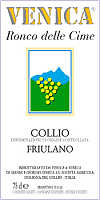
|
|
Collio Friulano Ronco delle Cime 2012 |
|
| Venica (Friuli Venezia Giulia, Italy) | |
| Grapes: Friulano | |
| Price: € 18.00 | Score: |
| Collio Friulano Ronco delle Cime shows a pale straw yellow color and nuances of greenish yellow, very transparent. The nose denotes intense, clean, pleasing and refined aromas which start with hints of apple, plum and pear followed by aromas of peach, citrus fruits, almond, hawthorn, broom and chamomile. The mouth has good correspondence to the nose, a crisp attack and however balanced by alcohol, good body, intense flavors, pleasing roundness. The finish is persistent with flavors of apple, pear and plum. A part of Collio Friulano Ronco delle Cime ages for 5 months in cask. | |
| Food Match: Fried fish, Pasta and risotto with fish and crustaceans, Broiled crustaceans | |
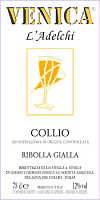
|
|
Collio Ribolla Gialla L'Adelchi 2012 |
|
| Venica (Friuli Venezia Giulia, Italy) | |
| Grapes: Ribolla Gialla | |
| Price: € 18.00 | Score: |
| Collio Ribolla Gialla L'Adelchi shows a pale straw yellow color and nuances of greenish yellow, very transparent. The nose reveals intense, clean, pleasing and refined aromas that start with hints of apple, pear and plum followed by aromas of broom, hawthorn, peach, citrus fruits, pineapple and mineral. The mouth has good correspondence to the nose, a crisp attack and however balanced by alcohol, good body, intense flavors, agreeable. The finish is persistent with flavors of apple, pear and plum. A part of Collio Ribolla Gialla L'Adelchi ferments and ages in cask for 5 months. | |
| Food Match: Pasta and risotto with fish and vegetables, Sauteed fish, Fried fish | |
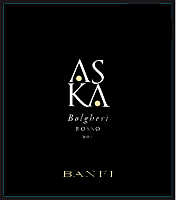
|
|
Bolgheri Rosso Aska 2011 |
|
| Castello Banfi (Tuscany, Italy) | |
| Grapes: Cabernet Sauvignon, Cabernet Franc | |
| Price: € 13.50 | Score: |
| Bolgheri Rosso Aska shows an intense ruby red color and nuances of ruby red, little transparency. The nose reveals intense, clean, pleasing and refined aromas which start with hints of black currant, black cherry and plum followed by aromas of violet, blueberry, vanilla, pink pepper, tobacco, chocolate, mace and eucalyptus. The mouth has good correspondence to the nose, a tannic attack and however balanced by alcohol, good body, intense flavors, agreeable. The finish is persistent with flavors of black currant, black cherry and plum. Bolgheri Rosso Aska ages for 10 months in cask. | |
| Food Match: Roasted meat, Broiled meat and barbecue, Stewed and braised meat with mushrooms, Hard cheese | |
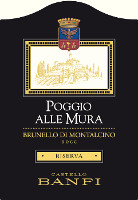
|
|
Brunello di Montalcino Riserva Poggio alle Mura 2007 |
|
| Castello Banfi (Tuscany, Italy) | |
| Grapes: Sangiovese | |
| Price: € 60.00 | Score: |
| Brunello di Montalcino Riserva Poggio alle Mura shows an intense ruby red color and nuances of garnet red, little transparency. The nose denotes intense, clean, pleasing, refined and elegant aromas that start with hints of plum, black cherry and dried violet followed by aromas of blueberry, blackberry, vanilla, chocolate, tobacco, pink pepper, leather, licorice, mace and menthol. The mouth has good correspondence to the nose, a tannic attack and however balanced by alcohol, full body, intense flavors, pleasing roundness. The finish is persistent with flavors of plum, black cherry and blueberry. Brunello di Montalcino Riserva Poggio alle Mura ages for 2 years in barrique and cask followed by 12 months of aging in bottle. | |
| Food Match: Game, Roasted meat, Stewed and braised meat, Hard cheese | |
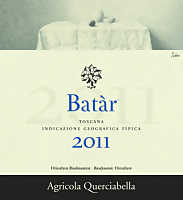
|
|
Batàr 2011 |
|
| Querciabella (Tuscany, Italy) | |
| Grapes: Chardonnay (50%), Pinot Blanc (50%) | |
| Price: € 90.00 | Score: |
| Batàr shows an intense straw yellow color and nuances of straw yellow, very transparent. The nose reveals intense, clean, pleasing, refined and elegant aromas that start with hints of banana, apple and plum followed by aromas of peach, vanilla, pear, hazelnut, grapefruit, acacia, butter, hawthorn, honey and mineral. The mouth has good correspondence to the nose, a crisp attack and however balanced by alcohol, good body, intense flavors, pleasing roundness. The finish is very persistent with long flavors of banana, plum and apple. Batàr ages in barrique for 9 months. | |
| Food Match: Roasted fish, Stuffed pasta with mushrooms, Roasted white meat, Stewed white meat | |
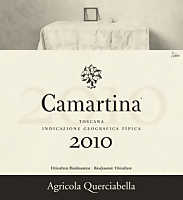
|
|
Camartina 2010 |
|
| Querciabella (Tuscany, Italy) | |
| Grapes: Cabernet Sauvignon (70%), Sangiovese (30%) | |
| Price: € 100.00 | Score: |
| Camartina shows a deep ruby red color and nuances of ruby red, little transparency. The nose reveals intense, clean, pleasing, refined and elegant aromas which start with hints of black currant, plum and violet followed by aromas of black cherry, blackberry, blueberry, vanilla, cocoa, tobacco, pink pepper, leather, mace, clover and eucalyptus. The mouth has excellent correspondence to the nose, a tannic attack and however balanced by alcohol, full body, intense flavors, pleasing roundness. The finish is very persistent with long flavors of black currant, black cherry and plum. Camartina ages for 18 months in barrique. | |
| Food Match: Selvaggina, Stufati e brasati di carne, Carne arrosto, Formaggi stagionati | |
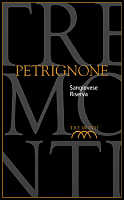
|
|
Sangiovese di Romagna Superiore Riserva Petrignone 2010 |
|
| Tre Monti (Emilia Romagna, Italy) | |
| Grapes: Sangiovese | |
| Price: € 12.00 | Score: |
| Sangiovese di Romagna Superiore Riserva Petrignone shows an intense ruby red color and nuances of ruby red, little transparency. The nose reveals intense, clean, pleasing, refined and elegant aromas which start with hints of black cherry, blueberry and violet followed by aromas of plum, blackberry, raspberry, geranium, vanilla, tobacco, carob and menthol. The mouth has good correspondence to the nose, a properly tannic attack and however balanced by alcohol, good body, intense flavors, agreeable. The finish is persistent with flavors of black cherry, blueberry and plum. Sangiovese di Romagna Superiore Riserva Petrignone ages in barrique for 6 months. | |
| Food Match: Stuffed pasta, Broiled meat and barbecue, Roasted meat | |
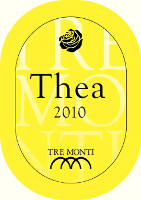
|
|
Sangiovese di Romagna Superiore Riserva Thea 2010 |
|
| Tre Monti (Emilia Romagna, Italy) | |
| Grapes: Sangiovese | |
| Price: € 19.00 | Score: |
| Sangiovese di Romagna Superiore Riserva Thea shows an intense ruby red color and nuances of ruby red, little transparency. The nose denotes intense, clean, pleasing, refined and elegant aromas that start with hints of black cherry, plum and blueberry followed by aromas of violet, raspberry, cyclamen, rose, blackberry, vanilla, chocolate, tobacco, pink pepper, mace and menthol. The mouth has excellent correspondence to the nose, a tannic attack and however balanced by alcohol, full body, intense flavors, pleasing crispness. The finish is very persistent with flavors of black cherry, plum and blueberry. Sangiovese di Romagna Superiore Riserva Thea ages in barrique for 9 months. | |
| Food Match: Game, Roasted meat, Stewed and braised meat, hard cheese | |
News |
|
In this section are published news and information about events concerning the world of wine and food. Whoever is interested in publishing this kind of information can send us a mail to our address.
|
Wine Parade |
|
|
| The best 15 wines according to DiWineTaste's readers. To express your best three wines send us an E-mail or fill in the form available at our WEB site. |
| Rank | Wine, Producer | |
|---|---|---|
| 1 |
| Brunello di Montalcino 2007, Donatella Cinelli Colombini |
| 2 |
| Verdicchio dei Castelli di Jesi Classico Superiore Podium 2010, Garofoli |
| 3 |
| Camartina 2008, Querciabella |
| 4 |
| San Leonardo 2006, Tenuta San Leonardo |
| 5 |
| Amarone della Valpolicella Classico Capitel Monte Olmi 2007, Tedeschi |
| 6 |
| Trento Brut Riserva Methius 2006, Dorigati |
| 7 |
| Villa Gresti 2006, Tenuta San Leonardo |
| 8 |
| Avvoltore 2009, Moris Farms |
| 9 |
| Langhe Riesling Herzu 2011, Ettore Germano |
| 10 |
| Trento Talento Brut Riserva 2007, Letrari |
| 11 |
| Brunello di Montalcino Vigna Loreto 2007, Mastrojanni |
| 12 |
| Confini 2007, Lis Neris |
| 13 |
| Sagrantino di Montefalco Collepiano 2007, Arnaldo Caprai |
| 14 |
| Pelago 2009, Umani Ronchi |
| 15 |
| Maximo 2010, Umani Ronchi |
| |||||||
Privacy Policy | |||||||


| Copyright © 2002-2024 Antonello Biancalana, DiWineTaste - All rights reserved |
| All rights reserved under international copyright conventions. No part of this publication and of this WEB site may be
reproduced or utilized in any form or by any means, electronic or mechanical, without permission in writing from DiWineTaste. |